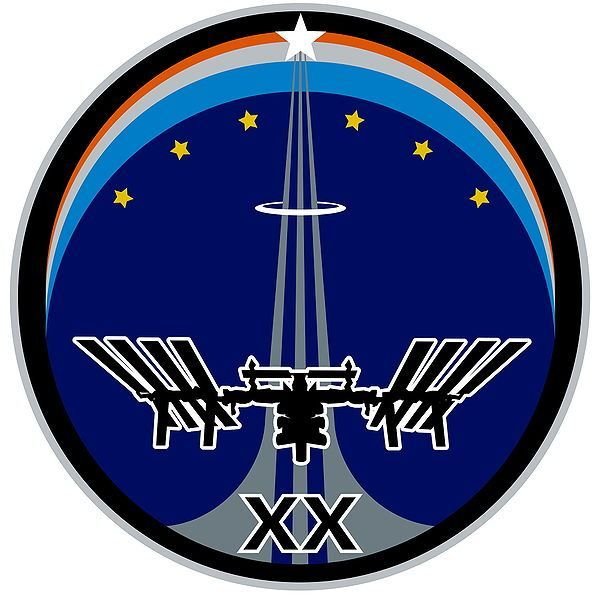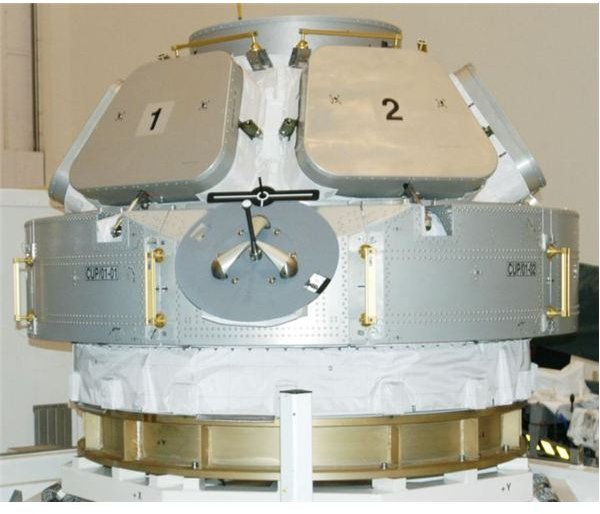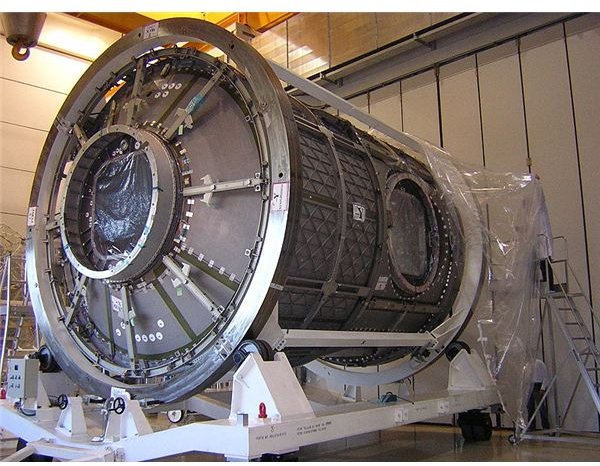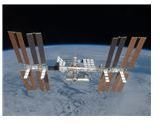Update on International Space Station - Facts About the International Space Station and ISS Tracking
According to briefings by NASA, the International Space Station (ISS) entered its next phase during 2009. The first six-person crew, known as Expedition 20, began its mission on May 29, 2009, after years of preparing the ISS for its fully-functioning status. While there is still work to be done on the station through the next few years, this development signaled the beginning of a new era for space research and cooperation between the five member countries’ agencies: the United States National Aeronautics and Space Administration, the Russian Federal Space Agency, the Japan Aerospace Exploration Agency, the Canadian Space Agency and the European Space Agency.
Despite their fledgling developments in space exploration, neither the China National Space Administration or the India Space Research Organization have chosen to take part.
Left: International Space Station. (Image supplied by NASA; Public Domain; https://upload.wikimedia.org/wikipedia/commons/8/80/ISS_March_2009.jpg)
Expedition 20 - The First Full Staff on the ISS

On May 27, 2009, a Soyuz spacecraft launched from the Baikonur Cosmodrome in Kazakhstan. Aboard the craft was Roman Romanenko, a Russian cosmonaut, Frank De Winne, a European Space Agency astronaut, and Bob Thirsk, a Canadian Space Agency astronaut. They joined Russian Commander Gennady Padalka, NASA’s Mike Barratt and Japan Aerospace Exploration Agency astronaut Koichi Wakata. In addition to the unprecedented number of crew members, this also became the first time that representatives from all five partners worked together.
Above right: Ensignia of Expedition 20. (Image supplied by NASA; Public Domain; https://upload.wikimedia.org/wikipedia/commons/c/cd/Iss-20_1.jpg)
H-2 Transfer Module

As part of the ongoing mission, the launch of a new cargo craft was undertaken in September 2009. A robotic spacecraft known as the H-2 Transfer Vehicle (HTV) began to be used to resupply the Japanese Experimental Module Kibo and the station in general. The module is more advanced than the previous resupply craft used by Russia, known as Progress. The HTV simply needs to be launched close enough to the station to be captured by the Canadarm2. It is then pulled into port on the Harmony module. Expedition 20 helped oversee the successful docking of this new craft.
Above left: H-2 Transfer Vehicle. (Image supplied by NASA; Public Domain; https://upload.wikimedia.org/wikipedia/commons/d/d6/H-2_Transfer_Vehicle.jpg)
Tranquility and Cupola on the ISS


In addition to the expanded mission crew, the Internationa Space Station is in the process of growing in size. Node 3, known as Tranquility, is scheduled to be added to the International Space Station in February 2010, in one of the final space shuttle missions. This node will provide more advanced life support systems, including waste water recycling and oxygen generation capabilities.
On the same shuttle flight will be an observatory module called Cupola. This is essentially a dome-shaped piece that will allow crew members to have a direct view of docked spacecraft and operations of the robotics.
With these additions, the ISS will essentially be completed. While additional pieces will most likely be added to the station, the craft will be ready to accommodate the full crew composition of six on a long-term basis. After over a decade of work between the five member countries, the project is nearing its completion. The research and goals of the international effort will go forward for the good of humanity.
Above left: Node 3. (Image supplied by NASA; Public Domain; https://upload.wikimedia.org/wikipedia/commons/c/c7/Iss_Node_3.JPG)
Above right: Cupola. (Image supplied by NASA; Public Domain; https://upload.wikimedia.org/wikipedia/commons/e/e5/Cupola_at_KSC.jpg)
Tracking the International Space Station in the Future
NASA provides a number of different orbital tracking options for the International Space Station. Tracking the International Space Station is relatively easy due to the fact that there is constant connections between the ground and the station. People interested in ISS tracking can simply go to the Human Space Flight Website from NASA or Heaven’s Above, a private company. Additionally, people can often look trhough telescopes to see the station in orbit.
Tracking the International Space Station and the fact that it is growing may ultimately be a moot point, however. The Bush administration, in 2004, deemed that NASA planned to deorbit the facility in 2016 following termination of international funding. The Obama administration, in 2009, stated that it intended to continue supporting the facility until at least 2020. Mixed feelings about the deorbit of the International Space Station are held by all. The ISS cost approximately $35 to $100 billion and has resulted in a continued presence in space for humans since November 2, 2000.
References
NASA: International Space Station (https://www.nasa.gov/mission_pages/station/main/index.html)
Boeing: International Space Station (https://www.boeing.com/defense-space/space/spacestation/)
Additional Resources
What is the International Space Station?
Facts About the International Space Station
International Space Station: Ten Years in the Making
Worm Virus Invades the International Space Station
This post is part of the series: Facts About the International Space Station
The International Space Station is one of the most expensive projects ever attempted by mankind. While the benefits of its creation can be lost to the public, the facts about the International Space Station show that it has been an important project that has changed mankind.
